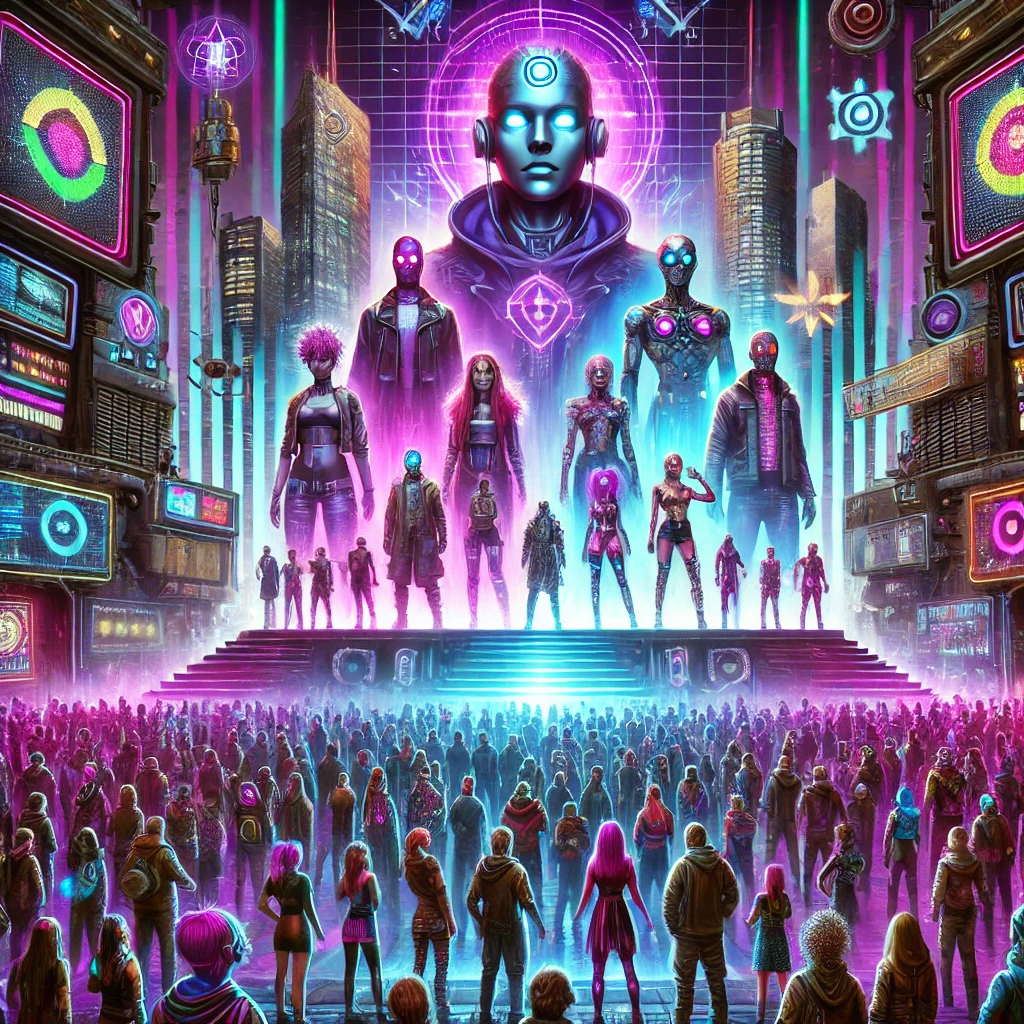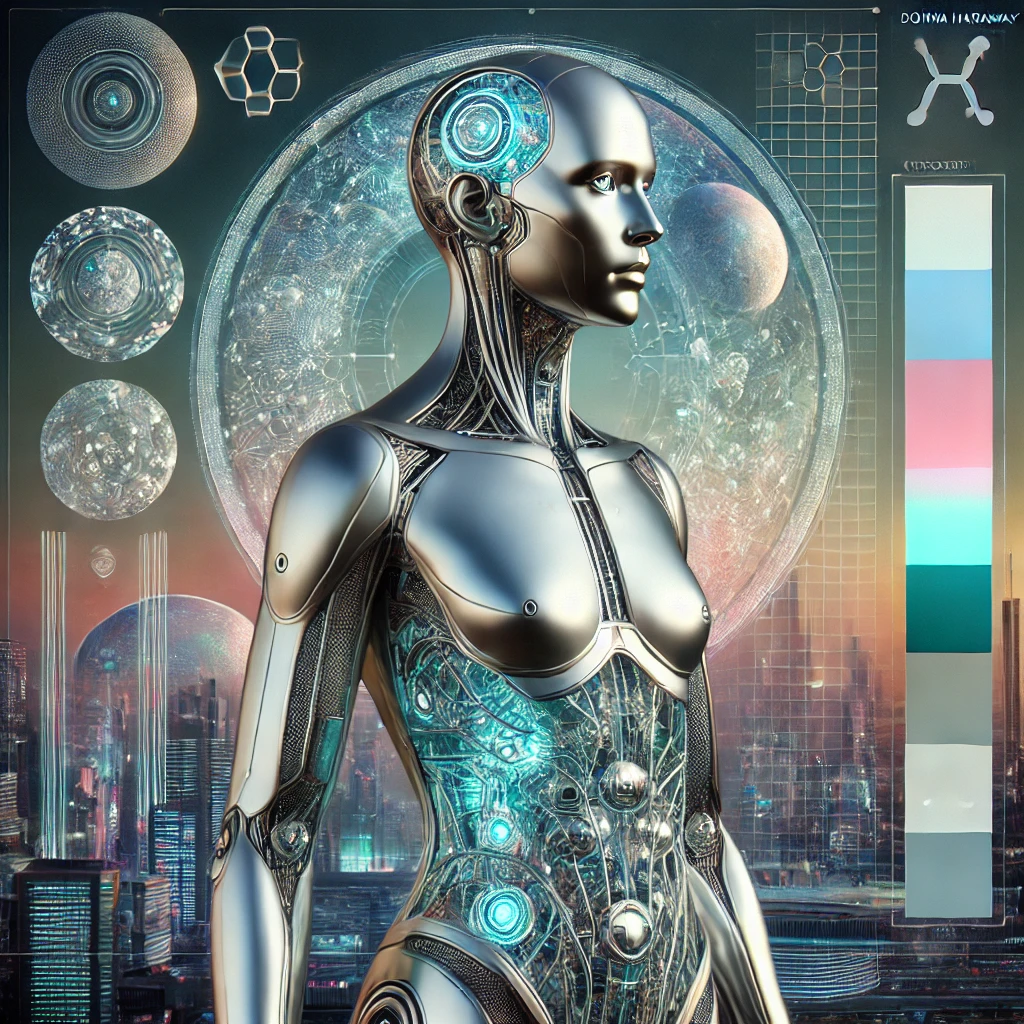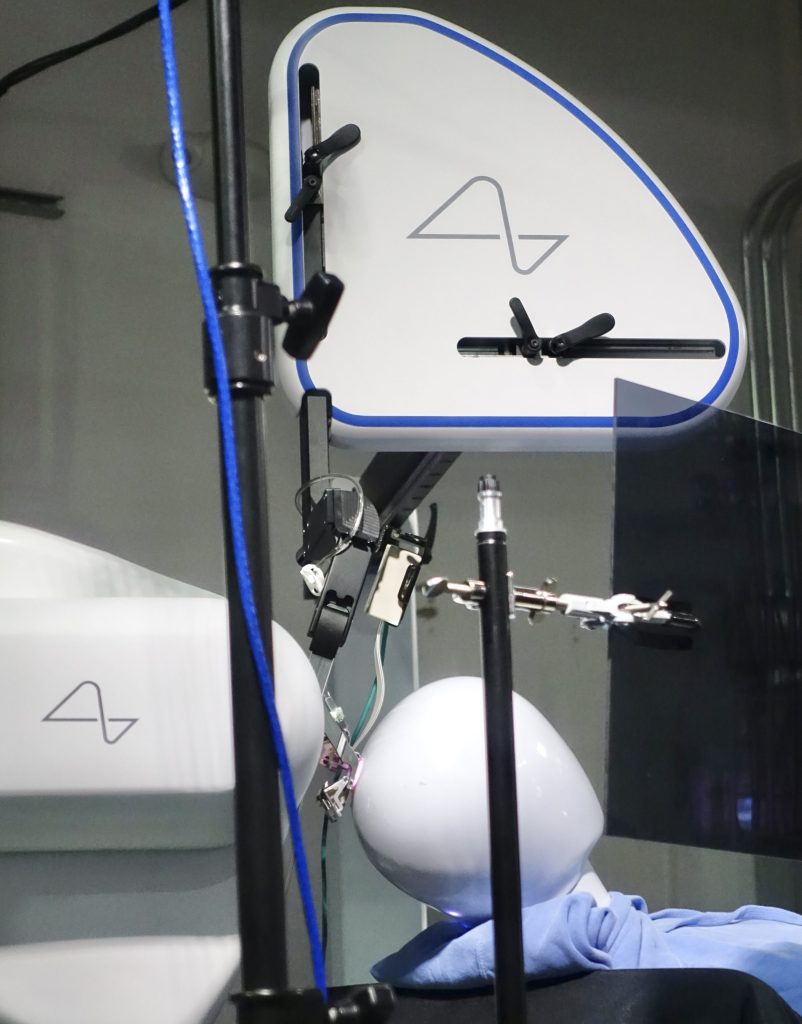Human augmentation, whether of body or mind, sounds like science fiction, but it’s now a field that’s rapidly approaching. Over the coming decades, we’re going to witness unimaginable breakthroughs that will blur the lines of what it means to be human. From physical enhancements to cognitive upgrades, the possibilities will test our understanding of ourselves and our limitations. In my lifetime, human augmentation will move from optional upgrades to essential tools. Wearables, such as smartwatches, are only the first step. Apple is constantly upgrading its products and using more and more AI. Neural implants could permit instant access to knowledge or perhaps even permit control of devices directly from the mind. Bioprinted organs and tissues may replace not only failing parts of the body but also improve them. Consider a liver, which can process alcohol more effectively, or even a heart that never tires. Physical augmentations like exoskeletons could give people superhuman strength and endurance, revolutionizing industries like construction or healthcare. If given the choice, I’d consider enhancements that help with learning and productivity. A neural implant that sharpens memory or improves focus would be appealing, especially as demands on our time grow. Physical improvements, like enhanced vision or better stamina, would also be useful, provided they were safe and reversible. However, I would draw the line at enhancements that involve changing personality, emotions, or individuality. It’s imperative to retain a sense of self, and anything getting in the way of this would feel wrong to me. Yet, these technologies come with risks. Will they remain affordable and available, or will they widen the social gap? Might they be turned to surveillance and control? As much as human augmentation excites me, we need to approach it with caution-balancing progress with ethics.
Ultimately, human augmentation is a question of choice. It’s about the choices we make to push our limits and the values we will uphold. That brings amazing potential; it’s up to us to use the technology wisely. Would you want these enhancements, or would you rather remain as nature designed you? Personally, I would take these enhancements with a grain of salt. It is obvious that every human being will want to improve their lives and make themselves better. There will just be a group of individuals who use this AI enhancement wisely and others who just take things overboard and forget what it is like to be human. If we use these enhancements safely, we can all shape this future of AI together.
How Human Augmentation Could Evolve in a Cyberpunk Future
I think human augmentation will become a huge part of life. Technology is moving fast, and it’s not hard to imagine a world where people can enhance themselves with machines and genetic tweaks to go beyond what nature ever intended. This could make life better for many people, but it also raises a lot of questions about fairness, identity, and how far we should go.
There will probably be options to enhance almost every part of the human body and mind. Brain implants could let people access the internet instantly or even communicate with others just by thinking. Cybernetic arms and legs might be stronger and faster than regular ones, giving people superhuman abilities. Augmented eyes could give you night vision, zoom, or even access to virtual reality overlays in real life. We might even be able to rewrite our DNA to avoid diseases or make ourselves faster, smarter, or more resistant to stress. Beyond function, these upgrades might also become a way to express individuality, like glowing tattoos or custom-designed prosthetics that look futuristic and cool.
There are some upgrades I’d be interested in trying, especially ones that improve my health or make life easier. For example, a brain implant that helps with memory or focus would be really useful in school and work. Augmented vision or hearing that you can turn on and off sounds great too—imagine being able to zoom in on a concert or hear someone talking across a noisy room. Health-focused implants, like ones that track your vitals or boost healing, could also be a game-changer. These kinds of upgrades seem practical and wouldn’t feel like I’m losing what makes me, me.
But there are definitely limits to what I think is okay. I wouldn’t want anything that could control my thoughts or let someone spy on me, like a brain implant that tracks everything I do. That feels way too invasive and dystopian. I’m also against upgrades that are just about vanity or show-off competition, like genetic tweaks for perfect looks or enhancements that only rich people can afford. In a cyberpunk-style future, where inequality is a huge problem, these kinds of augmentations could make life even harder for those who can’t keep up.
In Closing
Because of this class, I’ve been diving into the futuristic world of human augmentation, where technology collides with biology to reshape what it means to be human. Picture a reality where the lines between flesh and machine blur, and you’re left asking: What makes us… us? Cyberpunk stories paint a captivating yet often unsettling vision of how far we might go to enhance ourselves. This class hasn’t just opened my eyes to the possibilities; it’s also forced me to think about the deeper ethical and cultural questions surrounding this high-tech evolution.
The truth is, human augmentation isn’t just a sci-fi fantasy, it’s unfolding right now. With breakthroughs in biotechnology, artificial intelligence, and nanotech, the future is racing toward us. In my lifetime, I expect to see augmentations that transform physical abilities like superhuman strength or sharper senses and even rewire how we think through memory-enhancing implants or brain-computer interfaces. Tools like CRISPR gene editing and neural prosthetics are already making this a reality. As someone with a science background, I’m both fascinated and cautious. These innovations could unlock extraordinary potential, but they also raise tough questions about access, fairness, and the essence of identity.
What’s especially exciting is the idea that these enhancements could be as personalized as a custom-fit suit. Imagine technology that restores mobility to those with disabilities. Personally, I’m drawn to upgrades that offer practical benefits with minimal disruption, things like boosting memory, enhancing resilience to stress, or integrating wearable tech seamlessly into daily life. These changes feel like they could elevate productivity and well-being without making me feel less “me.”
Still, not every upgrade is tempting. Some augmentations lead into territory I find unsettling like replacing entire body systems or fundamentally altering thought processes. These kinds of extreme changes challenge the core of what makes us human. And what about augmentations purely for unfair advantages? Those could widen the gap between the haves and have-nots, creating a world where inequality is literally wired into our bodies.
At the end of the day, I’m both curious and cautious. The promise of human augmentation is thrilling, but it’s not without its risks. This class has shown me that as we inch closer to this augmented future, we need thoughtful, inclusive conversations to guide us. After all, what we choose to become will shape more than just ourselves; it will define the very fabric of our society.

The Future of Human Augmentation
In a world where technology constantly pushes the boundaries of human abilities, the question isn’t whether or not we can enhance ourselves but how far we are willing to go. The future of human augmentation is extremely bright if you ask me. Altering yourself using technology or other means is advancing at a rapid pace. Fifty years ago, genetic engineering, virtual reality, and 3D bioprinting were merely things of science fiction. Considering what I’ve learned and contemplated in this class, I believe that human augmentation will evolve significantly in my lifetime to the point where it will become difficult to differentiate between the biological and technological.
I envision human augmentation being particularly beneficial for individuals dealing with health and physical challenges. For example, devices could be developed to improve overall health and alert medical professionals if a serious issue arises. Personally, I would value a device designed to help manage anxiety, especially since it can be debilitating at times. Something wearable that alleviates feelings of inadequacy or discomfort would make a profound difference in my life. Additionally, I would appreciate advanced technologies to address vision and hearing impairments. If something like that became available, I’d be the first to embrace them.
However, I believe clear ethical boundaries must be upheld. Through my research on designer babies, I’ve learned how certain augmentations can cross ethical lines, especially when they promote inequality or create unfair advantages. Any form of augmentation that undermines equality or fairness would be unacceptable in my view. Also, any augmentation that involves an extremely invasive process to be used. Painful surgical implants and things of that nature are absolutely unacceptable to me and aren’t conducive to human progress.
Human augmentation will progress throughout my lifetime and as it does, it will not only alter how we traditionally view humanity and technology, but it will also make us consider our physical and mental limits and how far we can go until technology exceeds those limits. Some augmentations might allow humans to overcome our natural constraints, others risk undermining the fundamental essence of what makes us human. To make sure that these advances won’t do more harm than good, we will need to be extremely careful in remaining ethical and don’t abuse whatever technological innovation we have.
Tyrell Corporation: Not Far From Fiction

In Blade Runner, the Tyrell Corporation accentuates corporate overreach and unethicality. It creates highly evolved technoogical “Replicats,” artificalial being that are indistiguishable from humans. They are designed to be exploited, and used for labor and warfare. The corporation prides itself on making porducts that are “more human than human” making a model out of surpassing human limitationts. The companies actions lead to severe consequences in the film that include social unrest, existential crisis and violence.
There some parallels that can be made between the Tyrell Corporations, and corporations of the contemporary world. Companies such as Amazon have faced criticism for their treatment of workers as expendable resources, similar to Tyrell’s exploitation of the Replicants. Furthermore, there are corporations crticized for their monopolization of markets and greed for power and influence. These include some tech giant like Google, Meta, and Amazon which have been caught overstepping in realms of privacy and information.
While these comparisons are important to make, there is of course the idea of potential hyperbolization of reality because the Tyrell Corporation is a work of fiction. Despite this, some realistic predictions can be made. If technological adavancements contune to evolve without proper ethical oversight, there is an increased risk of exploitation, dehumanization, and inequality. A consolidation of power by a few corporations, in AI and biotech fields specfically, is a very real concern.
The Future of Human Augmentation

As time progresses, human augmentation continues to become more of a reality. For starters, wearable technology such as exoskeletons will become the norm, evolving into surgically-placed devices that enhance strength, agility, and endurance. Prosthetics will also see an evolution with integrations such as neural-link and neural interfaces that will offer capabilities far beyond those of natural limbs.
Speaking further of the neural aspects of augmentation, “brain-computer” interfaces will allow for direct interaction with computers, potentially improving memory, learning speed, and critical thinking capabilities.
I feel that for myself, I will have several option available to me that will allow for me to live a bit further than nature intended. As aforementioned, neural implants will become a common augmentation in society. Health-oriented augmentations will advance too, that could possibly extend and improve quality of life in humans. This goes for physical and biochemical enhancements. There will be bioengineering that will improve immunity, strength, and other physical attributes.
There will also be some adaptations that won’t catch on in society, and will most likely be deemed unacceptable. Any augmentation’s that might resort from loss of autonomy such as thoe controlled by external entities or vulnerable to hacking would be unacceptable. Any enhancements that alter personality, emotions, or moral reasoning go in this category as well. There are some augmentation that I wouldn’t personally like; but society might be indifferent to. Those include enhancements that cater primarily to aesthetic trend or take advantage of social influence.
There are many overall ethical implications that come with augmentation technology and its advancement. There are many concerns that will rise, and many questions that will follow such as; who will get access to these enhancements? how will they mold societal structure? what regulations will need to be implemented to monitor augmentations use? These are all questions that will need to be answered as augmentation becomes more of a reality in my lifetime.
What is it to Even Be Human?
Donna Haraway’s Cyborg Manifesto and Janelle Monáe’s Dirty Computer may appear to be from vastly different worlds—an academic essay from the mid-1980s and a futuristic concept album from 2018. Yet, both works converge on shared themes of identity, resistance, and the fluidity of the human identity. Haraway’s cyborg—a fusion of machine and organism that disrupts conventional boundaries—is mirrored in Monáe’s portrayal of “dirty computers,” individuals whose non-conforming identities challenge societal norms in a dystopian world. Monáe takes Haraway’s theoretical vision and weaves it into a heartfelt narrative, exploring fluidity, rebellion, and liberation.
Haraway’s essay imagines a “post-gender” world where identity is no longer constrained by traditional binaries. Her cyborg metaphor dismantles divisions such as human/machine, nature/culture, and male/female, arguing that these boundaries perpetuate inequality. Similarly, Monáe’s album celebrates identities that resist categorization, representing her own fluid identity. Songs like “PYNK” embrace the fluidity of gender and sexuality, rejecting fixed definitions in favor of a spectrum. Monáe’s lyrics and visuals suggest that liberation lies in embracing multiplicity—an idea central to Haraway’s manifesto.

Moreover, Haraway frames the cyborg as inherently political, a symbol of resistance against oppressive systems. This is vividly echoed in Monáe’s Dirty Computer, which tells the story of Jane 57821, a rebel in a society that “cleans” non-conforming individuals to erase their identities. Tracks like “Django Jane” and “Crazy, Classic, Life” celebrate defiance and self-expression, aligning with Haraway’s vision of the cyborg as a figure that destabilizes oppressive power structures. Monáe’s dystopia critiques real-world systems of control, from surveillance to social conformity, much like Haraway’s cyborg challenges the dominance of capitalist and patriarchal ideologies. Haraway’s cyborg can be further examined in this analysis by Rebecca Pohl.
Monáe also mirrors Haraway’s exploration of technology as a double-edged sword. In Cyborg Manifesto, technology is both a tool of oppression and a means of subversion. The cyborg’s hybridity offers a way to reimagine identity beyond traditional limits. Similarly, Monáe’s album presents technology as a battleground. Songs like “Screwed” critique how power exploits technological tools, while the album’s narrative ultimately suggests that technology can also be reclaimed for liberation. The concept of being a “dirty computer” embraces the idea of imperfection as a form of resistance, much like Haraway’s cyborg rejects purity in favor of hybrid identities.
Finally, both Haraway and Monáe emphasize the importance of collective solidarity. Haraway envisions a world where the cyborg fosters new alliances that transcend race, gender, and class. Monáe’s work embodies this ethos, particularly in her collaboration with diverse artists and her calls for unity among marginalized communities. Songs like “Americans” highlight the intersections of different struggles, advocating for a future where differences are celebrated rather than erased.
In blending the theoretical with the personal, Haraway and Monáe challenge us to envision futures where identity is not a source of division but a wellspring of creativity and strength. While Haraway provides the framework, Monáe breathes life into it, creating a vivid, emotionally resonant exploration of what it means to resist conformity in a world that demands uniformity. Together, they remind us that the boundaries we draw—between human and machine, male and female, self and other—are not fixed but fluid, and in that fluidity lies the potential for radical transformation. To get a more in depth review of Monae’s album Dirty Computer, check out this link.
Human Augmentation: What Could the Future Hold?
As college students, we’re constantly talking about the future. We debate where technology will take us, what career paths will emerge, and how society will evolve. One topic that’s becoming more and more relevant is human augmentation, where technology and biology merge to enhance human experience. As we continue to push the boundaries of science and technology, it’s terrifying to think about what the future of human enhancement could look like in our lifetime.
The possibilities are vast. One of the biggest advancements we’re already seeing is in genetic engineering. Tools such as CRISPR, scientists are now able to make precise changes to our DNA. In the future, this could mean eliminating genetic diseases before they even have a chance to form or even designing our children to have certain traits, like better athletic ability or heightened intelligence. It’s fascinating, but also kind of scary to think about the ethical questions it raises. Should we have the power to alter our genetics? Will this lead to a new form of inequality, where only the rich can afford genetic enhancements?
On top of genetics, we’re seeing a boom in bionic technology. Prosthetics today are already more advanced than ever before, giving people the ability to run, jump, and move in ways that were previously impossible for those with disabilities. In the future, we could all potentially have access to augmented limbs or brain implants that enhance physical strength, mental abilities, or even sensory perception. Companies like Neuralink are already working on brain-computer interfaces, aiming to allow people to control devices with just their thoughts. It’s mind-blowing, right?
As cool as these possibilities sound, there are some things I’d be hesitant about. I’m all for improvements that help us live better lives—think better healthcare or tools that help people recover from serious injuries. The idea of completely altering human consciousness or merging with machines is a bit too much for me. Where do we draw the line? At what point are we still human, and when do we become something else entirely?
I think we need to be careful with the direction we take when it comes to augmentation. The potential is limitless, but it’s important that we balance progress with ethics. We shouldn’t forget what makes us human in our pursuit of pushing the boundaries of technology.
If you’re curious about how these technologies are evolving, check out sites like https://neuralink.com/ or read more about CRISPR on Harvard’s website. What do you think? Will you embrace human augmentation, or do you think we should draw a line somewhere?

“Neuralink Demo Detail” by jurvetson is licensed under CC BY 2.0.
Literally Redefining the blur in HUMANITY.

Human augmentation, related to science fiction, is becoming an increasingly plausible reality due to rapid advancements in biotechnology, artificial intelligence, and cyberpunk nature. Human augmentation is technologies that improve human capabilities. For example, prosthetics that are in a literal sense, a limb (arm or leg) can enhance cognitive functions. The future for human augmentation has huge potential and power to redefine what it means to be human. Reflecting on all the possibilities and challenges that may be faced with augmentation, I believe that within my lifetime, the lines between human and machine will be blurred significantly. Of course, this isn’t something that I would want. This type of change will raise ethical issues and changes within society.
When considering what adaptations, I would personally embrace, practicality and ethical considerations play a key role in my life as I have to think beyond how this can be beneficial or not. I would be interested in augmentations that improve health or alleviate physical limitations. I am a person who doesn’t like to see people struggle, so personally I would like the idea of enhanced vision or the prevention of hereditary diseases. I wish there was a world where people didn’t get sick all the time and then suffer and sometimes die. So, if there were ways that this could be prevented, I would definitely advocate for it. I would also consider cognitive enhancements that promote mental clarity and focus. As said in the Weekly Warmup, how mental health awareness is something important that’s not often expressed enough. I think it should definitely be expressed and have enhancements; while not altering a human’s capability and identity; changing them to who they are not. The world would be a better place. Don’t you think? I believe that the adaptations will have the goal of maximizing human potential.
On the other hand, I do believe that some forms of augmentation would be unacceptable to me. I think before augmentation should be considered there’s a need to openly discuss details on how this can be beneficial not only to one person but to many in a pleasant way. Any enhancements that risk deepening societal inequalities or creating new forms of discrimination would be unsettling. For example, luxury augmentations accessible only to the wealthy could exacerbate existing divides, which would only shine a light on the fact that the underprivileged deserve to be in the position that they are in. To add, I also feel that any adaptations that undermine individual autonomy in the fact that they allow external control over thoughts or actions would cross a critical ethical boundary. I say this because it reminds me of human and machine blur; the goal is to lessen that, not make it bigger.
To conclude, the evolution of human augmentation during my lifetime will present transformative opportunities. While I am optimistic about advancements that enhance well-being in individuals I am still cautious about the things that can be compromised. As these technologies continue to advance, it’s extremely important that society comes together in thoughtful discussions to ensure that human augmentation serves the collective good.
“The Possibilities are Endless”
Human augmentation is evolving at an astonishing pace, and I believe we are on the brink of groundbreaking advancements in our lifetime. Today, technologies like cochlear implants already enhance human capabilities, allowing people to regain hearing. It’s not far-fetched to imagine that even more advanced augmentations exist but have yet to be publicly disclosed. For example, I foresee a future where lab-grown organs replace faulty ones with perfect precision, and even the process of growing babies outside the womb in artificial environments could become a reality. Another fascinating possibility is the integration of AI into the human mind, enabling seamless communication across languages through real-time “code-switching.” These developments could fundamentally reshape how we live, interact, and solve some of humanity’s most pressing challenges.
Despite these exciting possibilities, I don’t believe technology will ever completely replace humans. Machines, no matter how advanced, will always require human supervision. As someone aspiring to be a healthcare professional, I aim to position myself as an innovator in my field, ensuring that I remain indispensable in a world where technology supports, but does not overshadow, human expertise. By contributing ideas that enhance and refine technology, I can ensure it remains a tool for good.
Personally, I would embrace adaptations that improve lives, particularly those that advance healthcare and save lives. Augmentations like lab-grown organs or advanced prosthetics could revolutionize medicine and provide opportunities to treat previously incurable conditions. However, I draw the line at technologies that blur the boundary between humans and machines. Giving machines human characteristics, such as emotions or consciousness, could lead to outcomes that spiral beyond our control. Maintaining a clear distinction between human and machine is essential for preserving our autonomy and safeguarding ethical boundaries.
Human augmentation holds tremendous potential, but it’s up to us to guide its evolution responsibly.